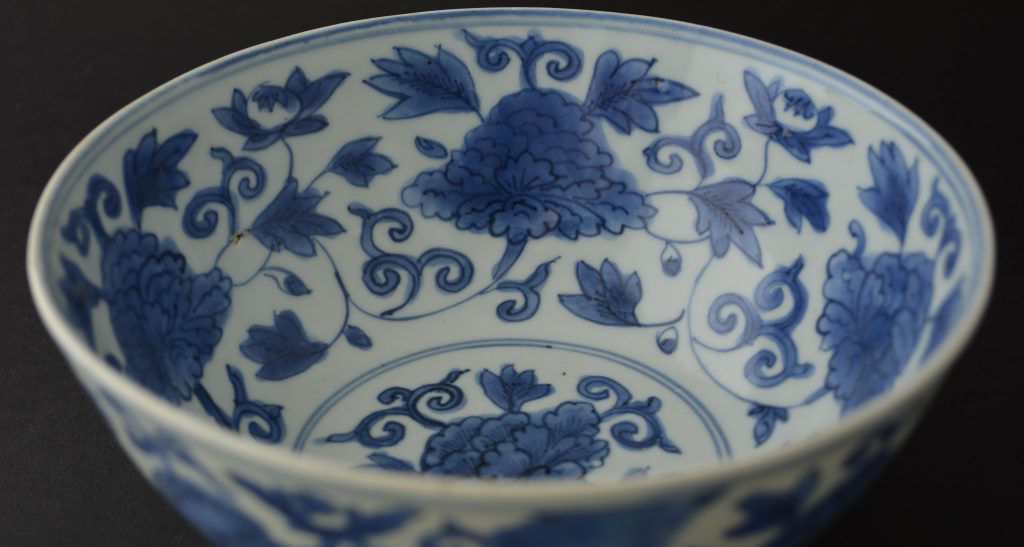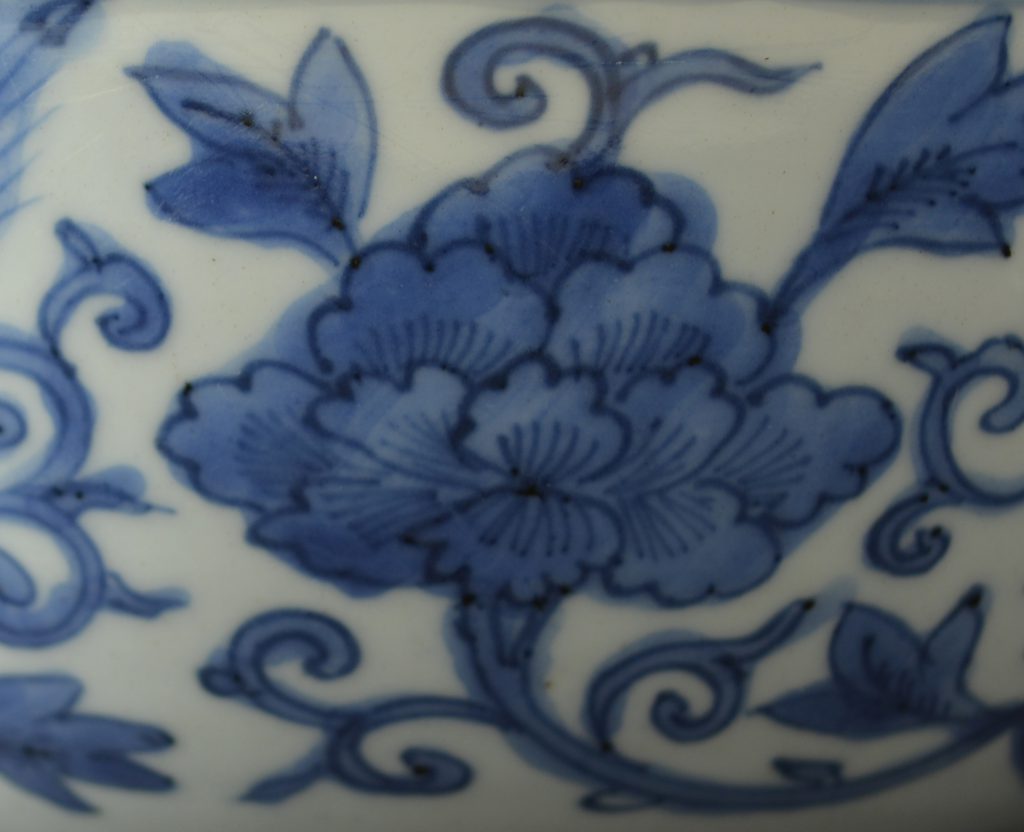
A Late Ming Blue and White Porcelain Bowl, Wanli or Tianqi c.1600 – 1627.
A Ming Blue and White porcelain bowl, late Wanli or Tianqi c.1600-1627. Decorated to the exterior with Buddhist lions among scrolling peony, the interior with scrolling peony.
SOLD
- Condition
- the rim is slightly polished, there are two polished chips to the outer rim, see pictures.
- Size
- Diameter : 18 cm (7 inches)
- Provenance
- N/A
- Stock number
- 24712
Information
Fu Dog, Buddhist Lion or Fo Dog :
When Buddhist priests, or possibly traders, brought stories to China about stone dogs guarding the entry to Indian Buddhist temples, Chinese sculptors modelled statues after native dogs for use outside their temples. The mythic version of the animal, was known as the Dog of Fo, the word Fo being Chinese for Buddha.
The Buddhist version of the dog was originally introduced to Han China as the protector of dharma and these dogs have been found in religious art as early as c.200 BC. Gradually they were incorporated as guardians of the Chinese Imperial dharm. However, Chinese sensitivity metamorphosed the dog into a lion, even though lions were not indigenous to China, since this seems more appropriate to the dignity of an emperor when he used the beasts to guard his gates. The mythic dog is sometimes associated with feng shui, and are often called Fu Dogs. Fu means 'happiness' in Chinese; however, the term 'Fu Dog' and its variant Foo Dog, are not used in Chinese. Instead, they are known as Rui Shi ('auspicious lions') or simply Shi (lions).
There are various styles of imperial guardian lions reflecting influences from different time periods, imperial dynasties, and regions of China. These styles vary in their artistic detail and adornment as well as in the depiction of the lions from fierce to serene.
Peony :
Peonies are the most commonly encountered flower on Chinese porcelain, indeed in Chinese art in general. There are two cultivated types of peony commonly depicted, the tree peony Paeonia Suffruicosa (Mudan) and the herbaceous peony P.Lactiflora (Shaoyao). Both have rich exuberant flowers with thin silk like petals but the plants are rather different to each other. The tree peony is not in fact a tree but a deciduous shrub, sometimes rather large and sprawling, it has irregular woody stems. It shares a similar leaf and flower form to the herbaceous peony but they are not close in other ways. The Chinese refer to the peony as the `King of flowers` and are seen as equivalent to the first rank among officials. The flowers are closely associated with royalty because they have been grown in imperial gardens since the Sui dynasty (581-618). The peony is one of the flowers of the four seasons and represents the Spring. It symbolizes wealth and honour, honour in the sense of high rank, having an official position, or high social status.





